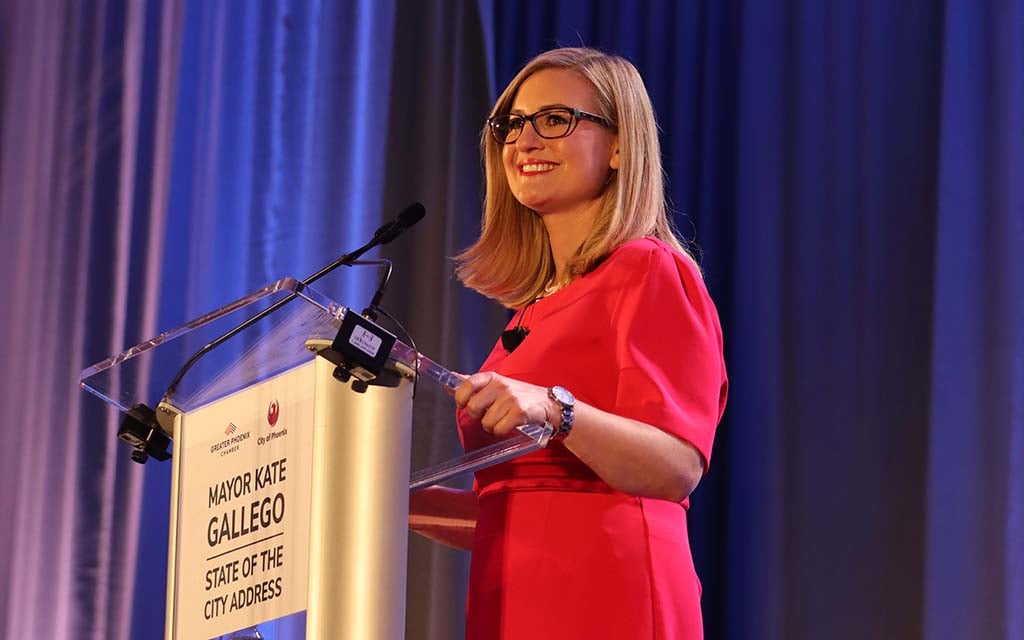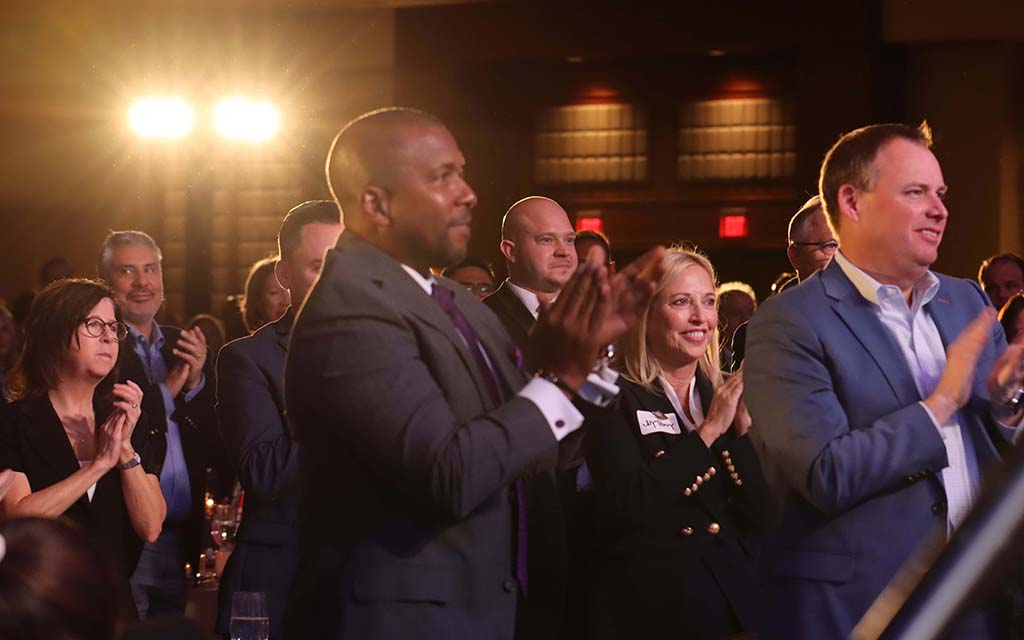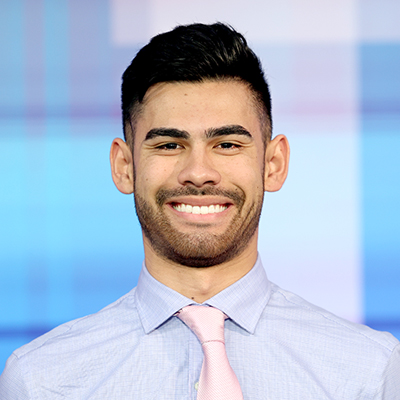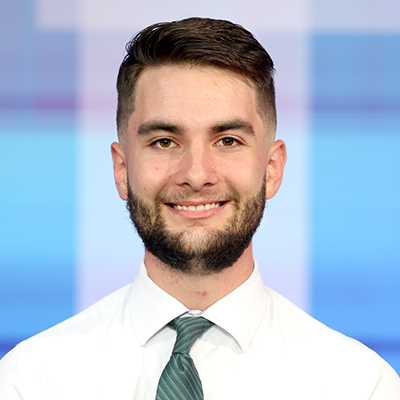
Phoenix Mayor Kate Gallego delivers her annual State of the City address at the Sheraton Phoenix Downtown on April 12, 2023. (Photo by Paula Soria/Cronkite News)

Phoenix Mayor Kate Gallego and Greater Phoenix Chamber of Commerce President and CEO Todd Sanders have a question-and-answer session after Gallego’s State of the City address at the Sheraton Phoenix Downtown on April 12, 2023. (Photo by Paula Soria/Cronkite News)

The audience stands and applauds for Phoenix Mayor Kate Gallego during her annual State of the City address at Sheraton Phoenix Downtown on April 12, 2023. (Photo by Paula Soria/Cronkite News)
PHOENIX – Phoenix Mayor Kate Gallego stressed the importance of addressing homelessness, climate change and infrastructure in her annual State of the City address Wednesday.
“As the city continues to confront this challenge head-on, I am renewing my call to our partners – from other municipalities across the Valley to state and county agencies: The only way we can solve a problem that affects us all is by working together,” Gallego said.
In her remarks at the Sheraton Phoenix Downtown, she outlined the tactics Phoenix is using to combat the homelessness crisis, including working with nonprofit partners to manage more than 5,000 affordable housing units. Last week, the YMCA unveiled a new homeless youth drop-in and residential program to young adults in need of food and other services.
Between 2020 and 2022, 22% more people experienced homelessness in Maricopa County and 34% more were unsheltered, according to a count done by Maricopa Association of Governments.
In addition to homelessness, Gallego highlighted another ever-growing problem: climate change.
She called attention to Phoenix’s multiple projects to fight the heat, including installing 100 miles of cool pavement and planting trees to shade public walkways. At least 378 people died of heat-associated causes in 2022, according to the Maricopa County Public Health Department, with deaths occurring almost a month earlier than 2021.
Gallego urged federal action to help fight extreme heat in Arizona.
“These strategies have gone a long way to reduce urban temperatures – but we also need to meet the moment to support our most vulnerable,” she said. “We need national action. … That’s why I’m calling on FEMA to revise their declared-disasters list to include extreme heat. Resources from pop-up shelters to additional outreach to our vulnerable residents could help us successfully navigate unforgiving summers.”
Shading public paths and cooling down pavement were two small pieces of broader infrastructure improvements across Phoenix. Gallego attributed many of the improvements to Phoenix’s infrastructure to the federal Bipartisan Infrastructure Law, which is funding new additions to the light rail and improvements to water recycling. Projects like these will help the push for clean energy in Arizona, Gallego said.
“I know you all understand the urgency, too. Many of your companies have set ambitious water conservation and restoration goals,” she said. “We will continue to bring new ideas to the table to be good partners, and together we can co-create new solutions.”
Along with these topics, Gallego also committed to better health care for Phoenix residents “so that people can access world class medicine and services close to home.” Mayo Clinic and Barrow Neurological Institute are both developing research facilities in Phoenix.
Barrow is part of the newly designated Phoenix Medical Quarter, a health hub at Park Central at Thomas Road and Central Avenue.
“The Phoenix Medical Quarter will be known as a place of innovation and advancement of the medical field, and it is the perfect location for Barrow to continue to expand as we look to explore the mysteries of the mind,” Barrow President and CEO Michael Lawton said in a statement.


